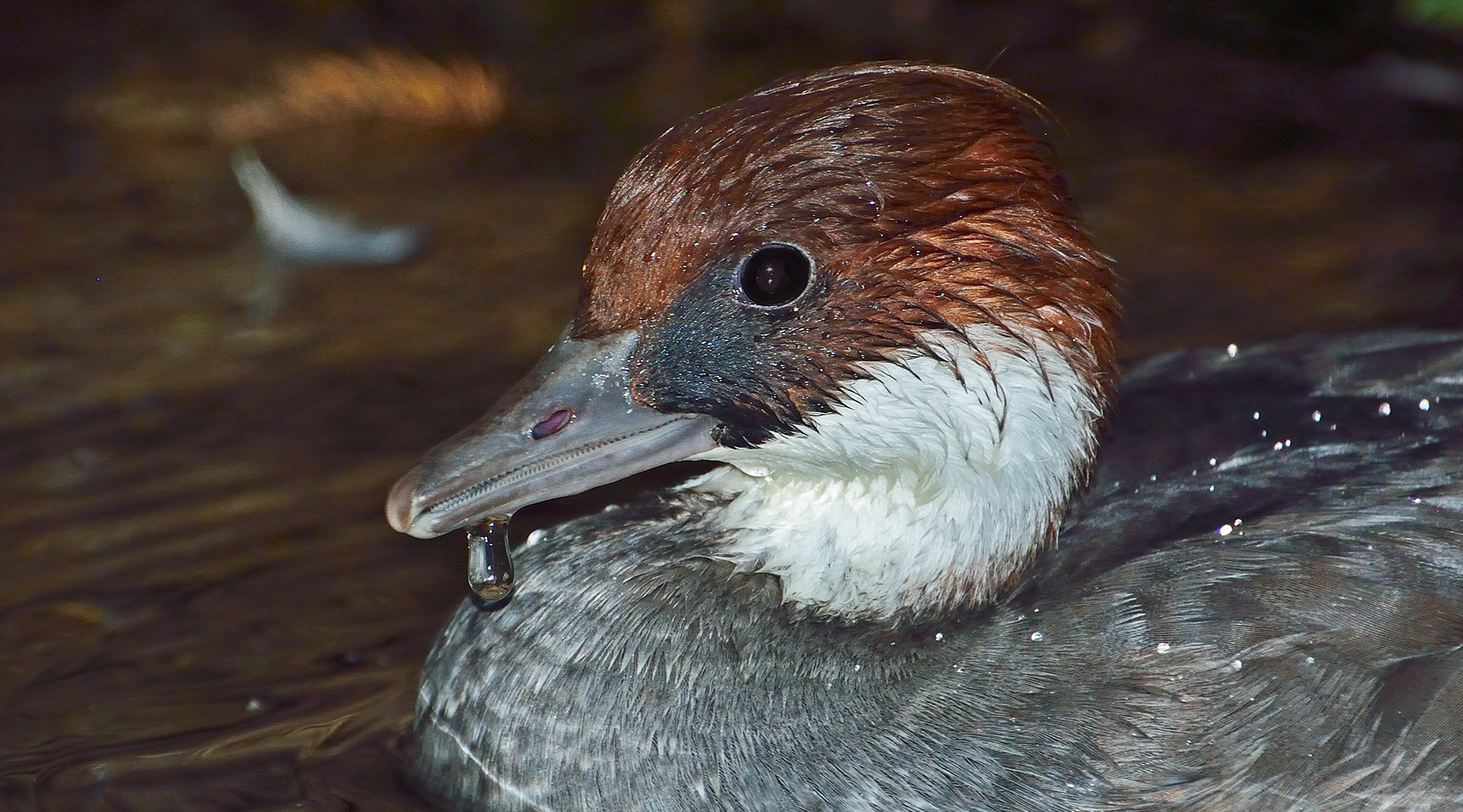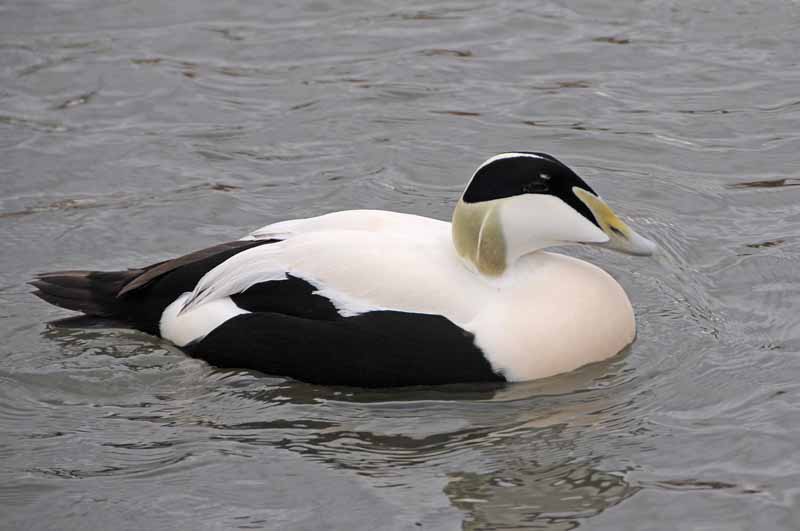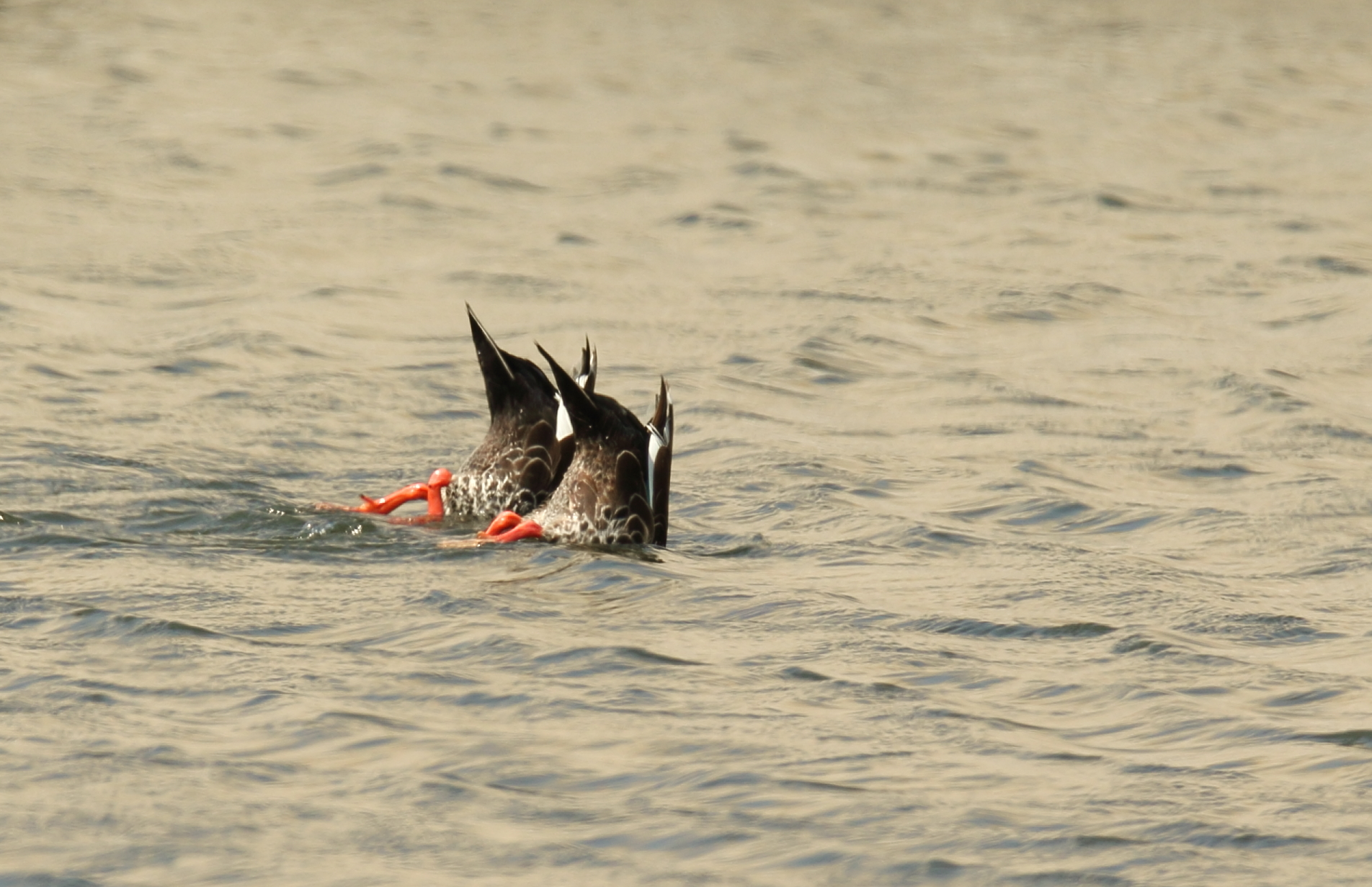|
Seaduck
The sea ducks (''Mergini'') are a tribe of the duck subfamily of birds, the Anatinae. The taxonomy of this group is incomplete. Some authorities separate the group as a subfamily, while others remove some genera. Most species within the group spend their winters near coastal waters. Many species have developed specialized salt glands to allow them to tolerate salt water, but these are poorly developed in juveniles. Some of the species prefer riverine habitats. All but two of the 22 species in this group live in far northern latitudes. The fish-eating members of this group, such as the mergansers and smew, have serrated edges to their bills to help them grip their prey and are often known as "sawbills". Other sea ducks forage by diving underwater, taking molluscs or crustaceans from the sea floor. The Mergini take on the eclipse plumage during the late summer and molt into their breeding plumage during the winter. Species There are twenty-two species in ten genera: *Genus ''Clang ... [...More Info...] [...Related Items...] OR: [Wikipedia] [Google] [Baidu] |
Common Eider
The common eider (pronounced ) (''Somateria mollissima''), also called St. Cuthbert's duck or Cuddy's duck, is a large ( in body length) sea-duck that is distributed over the northern coasts of Europe, North America and eastern Siberia. It breeds in Arctic and some northern temperate regions, but winters somewhat farther south in temperate zones, when it can form large flocks on coastal waters. It can fly at speeds up to . The eider's nest is built close to the sea and is lined with eiderdown, plucked from the female's breast. This soft and warm lining has long been harvested for filling pillows and quilts, but in more recent years has been largely replaced by down from domestic farm-geese and synthetic alternatives. Although eiderdown pillows or quilts are now a rarity, eiderdown harvesting continues and is sustainable, as it can be done after the ducklings leave the nest with no harm to the birds. Taxonomy The common eider was formally named by the Swedish naturalist ... [...More Info...] [...Related Items...] OR: [Wikipedia] [Google] [Baidu] |
Lophodytes
The hooded merganser (''Lophodytes cucullatus'') is a species of merganser. It is the only extant species in the genus ''Lophodytes''. The genus name derives from the Greek language: ''lophos'' meaning 'crest', and ''dutes'' meaning 'diver'. The bird is striking in appearance; both sexes have crests that they can raise or lower, and the breeding plumage of the male is handsomely patterned and coloured. The hooded merganser has a sawbill but is not classified as a typical merganser. Hooded mergansers are the second-smallest species of merganser, with only the smew of Europe and Asia being smaller, and it also is the only merganser whose native habitat is restricted to North America. A species of fossil merganser from the Late Pleistocene of Vero Beach, Florida, was described as ''Querquedula floridana'' (a genus now included in ''Anas''), but upon reexamination turned out to be a species closely related to the hooded merganser; it is now named ''Lophodytes floridanus'', but th ... [...More Info...] [...Related Items...] OR: [Wikipedia] [Google] [Baidu] |
Smew
The smew (''Mergellus albellus'') is a species of duck, and is the only living member of the genus ''Mergellus''. ''Mergellus'' is a diminutive of '' Mergus'' and ''albellus'' is from Latin ''albus'' "white". This genus is closely related to ''Mergus'' and is sometimes included in it, though it might be closer to the goldeneyes (''Bucephala''). The smew has hybridized with the common goldeneye (''B. clangula''). A seaduck fossil from the Middle Miocene shows that birds similar to smew existed up to 13 million years ago. The extant species dates back to the Late Pleistocene. Name The term ''smew'' has been used since the 17th century and is of uncertain origin. It is believed to be related to the Dutch ''smient'' (" wigeon") and the German ''Schmeiente'' or '' Schmünte'', "wild duck." It is probably derived from ''smee'', a dialectal term for a wild duck. Description The drake smew, with its 'cracked ice' or 'panda' appearance, is unmistakable, and looks very black- ... [...More Info...] [...Related Items...] OR: [Wikipedia] [Google] [Baidu] |
Polysticta
Steller's eider (''Polysticta stelleri'') is a migrating Arctic diving duck that breeds along the coastlines of eastern Russia and Alaska. It is the rarest, smallest, and fastest flying of the eider species. Amongst the Inupiat, Steller's eider is known as the "bird that sat in the campfire", referring to the burnt-ish color of the male's belly. Due to the extensive contraction of its breeding range, the Alaska-breeding population of Steller's eider was listed as vulnerable in 1997 by the International Union for the Conservation of Nature ( IUCN). The species is protected in Russia and the U.S. and is the subject of an ongoing recovery plan by the European Union and U.S. Fish and Wildlife Service. Taxonomy Steller’s eider is in the family Anatidae along with other ducks, geese, and swans and is the only species in the genus Polysticta. Despite its name, it is more distantly related than all other extant eider species which are part of the Somateria genus. Steller's eider wa ... [...More Info...] [...Related Items...] OR: [Wikipedia] [Google] [Baidu] |
Somateria
Eiders () are large seaducks in the genus ''Somateria''. The three extant species all breed in the cooler latitudes of the Northern Hemisphere. The down feathers of eider ducks, and some other ducks and geese, are used to fill pillows and quilts—they have given the name to the type of quilt known as an eiderdown. Taxonomy The genus ''Somateria '' was introduced in 1819 to accommodate the king eider by the English zoologist William Leach in an appendix to John Ross's account of his voyage to look for the Northwest Passage. The name is derived from Ancient Greek : ''sōma'' "body" (stem ''somat-'') and : ''erion'' "wool", referring to eiderdown. Steller's eider (''Polysticta stelleri'') is in a different genus despite its name. Species The genus contains three species. Two undescribed species are known from fossils, one from Middle Oligocene rocks in Kazakhstan and another from the Late Miocene or Early Pliocene The Pliocene ( ; also Pleiocene) is the epo ... [...More Info...] [...Related Items...] OR: [Wikipedia] [Google] [Baidu] |
Black Scoter
The black scoter or American scoter (''Melanitta americana'') is a large sea duck, in length. The genus name is derived from Ancient Greek ''melas'' "black" and ''netta'' "duck". The species name is from the Latin for "American ". Together with the common scoter ''M. nigra'', it forms the subgenus ''Oidemia''; the two are sometimes considered conspecific, the black scoter then being referred to as ''M. nigra americana''. Its French name, used in parts of its Canadian range, is ''macreuse noire'' (also meaning "black scoter"). The species is listed as Near Threatened by the IUCN. Description This large sea duck is characterised by its bulky shape and large bill. The adult male is all black with a very bulbous bill which is mostly yellow. The female is a brown bird with pale cheeks, very similar to female common scoter. The adult female averages about and in length, while the adult male is on average and in length. This species can be distinguished from other scoters, apar ... [...More Info...] [...Related Items...] OR: [Wikipedia] [Google] [Baidu] |
Steller's Eider
Steller's eider (''Polysticta stelleri'') is a migrating Arctic diving duck that breeds along the coastlines of eastern Russia and Alaska. It is the rarest, smallest, and fastest flying of the eider species. Amongst the Inupiat, Steller's eider is known as the "bird that sat in the campfire", referring to the burnt-ish color of the male's belly. Due to the extensive contraction of its breeding range, the Alaska-breeding population of Steller's eider was listed as vulnerable in 1997 by the International Union for the Conservation of Nature ( IUCN). The species is protected in Russia and the U.S. and is the subject of an ongoing recovery plan by the European Union and U.S. Fish and Wildlife Service. Taxonomy Steller’s eider is in the family Anatidae along with other ducks, geese, and swans and is the only species in the genus Polysticta. Despite its name, it is more distantly related than all other extant eider species which are part of the Somateria genus. Steller's eider w ... [...More Info...] [...Related Items...] OR: [Wikipedia] [Google] [Baidu] |
Duck
Duck is the common name for numerous species of waterfowl in the family Anatidae. Ducks are generally smaller and shorter-necked than swans and geese, which are members of the same family. Divided among several subfamilies, they are a form taxon; they do not represent a monophyletic group (the group of all descendants of a single common ancestral species), since swans and geese are not considered ducks. Ducks are mostly aquatic birds, and may be found in both fresh water and sea water. Ducks are sometimes confused with several types of unrelated water birds with similar forms, such as loons or divers, grebes, gallinules and coots. Etymology The word ''duck'' comes from Old English 'diver', a derivative of the verb 'to duck, bend down low as if to get under something, or dive', because of the way many species in the dabbling duck group feed by upending; compare with Dutch and German 'to dive'. This word replaced Old English / 'duck', possibly to avoid conf ... [...More Info...] [...Related Items...] OR: [Wikipedia] [Google] [Baidu] |
Anatinae
The Anatinae are a subfamily of the family Anatidae (swans, geese and ducks). Its surviving members are the dabbling ducks, which feed mainly at the surface rather than by diving. The other members of the Anatinae are the extinct moa-nalo, a young but highly apomorphic lineage derived from the dabbling ducks. There has been much debate about the systematical status and which ducks belong to the Anatinae. Some taxonomic authorities only include the dabbling ducks and their close relatives, the extinct moa-nalos. Alternatively, the Anatinae are considered to include most "ducks", and the dabbling ducks form a tribe Anatini within these. The classification as presented here more appropriately reflects the remaining uncertainty about the interrelationships of the major lineages of Anatidae (waterfowl). Systematics The dabbling duck group, of worldwide distribution, was delimited in a 1986 study to include eight genera and some 50–60 living species. However, Salvadori's teal i ... [...More Info...] [...Related Items...] OR: [Wikipedia] [Google] [Baidu] |
Surf Scoter
The surf scoter (''Melanitta perspicillata'') is a large sea duck native to North America. Adult males are almost entirely black with characteristic white patches on the forehead and the nape and adult females are slightly smaller and browner. Surf scoters breed in Northern Canada and Alaska and winter along the Pacific and Atlantic coasts of North America. Those diving ducks mainly feed on benthic invertebrates, mussels representing an important part of their diet. Taxonomy In 1750 the English naturalist George Edwards included an illustration and a description of the surf scoter in the third volume of his ''A Natural History of Uncommon Birds''. He used the English name "The great black duck from Hudson's Bay". Edwards based his hand-coloured etching on a preserved specimen that had been brought to London from the Hudson Bay area of Canada by James Isham. When in 1758 the Swedish naturalist Carl Linnaeus updated his ''Systema Naturae'' for the tenth edition, he placed the ... [...More Info...] [...Related Items...] OR: [Wikipedia] [Google] [Baidu] |
Mergus
''Mergus'' is the genus of the typical mergansers , fish-eating ducks in the subfamily Anatinae. The genus name is a Latin word used by Pliny the Elder and other Roman authors to refer to an unspecified waterbird. The common merganser (''Mergus merganser'') and red-breasted merganser (''M. serrator'') have broad ranges in the northern hemisphere. The Brazilian merganser (''M. octosetaceus'') is a South American duck, and one of the six most threatened waterfowl in the world, with possibly fewer than 250 birds in the wild. The scaly-sided merganser or "Chinese merganser" (''M. squamatus'') is an endangered species. It lives in temperate East Asia, breeding in the north and wintering in the south. The hooded merganser (''Lophodytes cucullatus'', formerly known as ''Mergus cucullatus'') is not of this genus but is closely related. The other "aberrant" merganser, the smew (''Mergellus albellus''), is phylogenetically closer to goldeneyes (''Bucephala''). Although they are seaduc ... [...More Info...] [...Related Items...] OR: [Wikipedia] [Google] [Baidu] |


.jpg)




